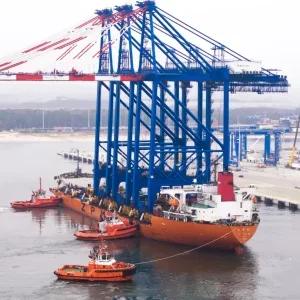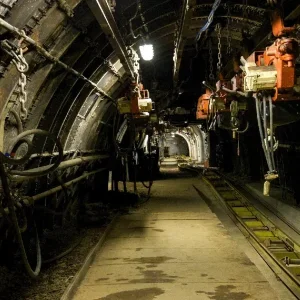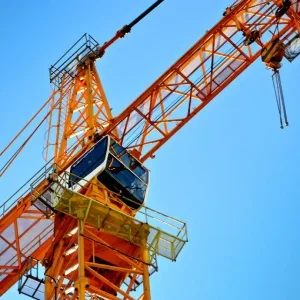The hoist’s first two models have lifting capacities of 5t (5.5 US ton) and 10t (11 US ton) capacities, not 4.5t and 9t as previously reported. The company has plans for the range to run from lifting capacities between 1t and 20t. All models are four fall and two-speed for hoisting (6m (20ft)/min and 1.5m (5ft/min)). Variable-frequency controls are standard for travel, but not yet an option for hoisting. The 5t and 10t capacities are rated to run at FEM 2M duty, and the 10t model is also available de-rated to 8t at FEM 3M duty. Two heights of lift are offered: 25ft (7.6m) and 40ft (12m).
It is the third version of the Shaw-Box World Series range, which is also branded the Yale Global King. Like the other models, its capacity is rated in metric tonnes, rather than in the prevalent US measure, the short ton (One metric tonne, abbreviated ‘t’, Hoist magazine’s standard unit, is 1.1 US tons.)
In late March, the second version of the World Series/Global King range, launched three years ago, was being phased out as production ramped up for the new third version. Both version two and version one, launched five years ago, were designed to ANSI standards.
The hoist is also the company’s first powered hoist to include parts made at one of the company’s Chinese factories. In China, its thick-walled tube frame is fabricated and welded, its geared travel wheels are cut, its drive shafts turned, and its frame is assembled and its wheels are attached. The hoist will be available with three mounts: monorail, top-running and deck-mounted for adding to a custom trolley or for stationary installation.
‘I prefer tube to plate – it is more durable and heavier-duty. I like welding rather than clipping and bolting because it is more permanent,’ said product manager Greg Miskowiec.
The company boasts that the hoist, which is sold at the same price as the old version, is lighter, has less headroom and better approaches to end-stops. The FEM standard calls for compressed die-formed (swaged) wire rope, which reduces its size. US firm EIPS supplies the rope. That smaller rope requires a smaller drum, smaller sheaves and a smaller gear train. Improved frame steels – grade 50 instead of A36 – further lower weight. The trunnion-mounted hook decreases headroom by 15-20%. A shorter frame and larger-diameter drum improves approach distances by between 6-8 inches.
Drum, steel components, the electrical panel and the hook block are made in the company’s Muskegon, Michigan plant. Like previous hoists, the motor and brake come from ABM, and the three-reduction helical gear from US firm Omnigear. The company chose Omnigear because of torque ratios, size and cost, Miskowiec said. The hook block, which uses a forged hook from CM, can roll 180 degrees to make it easier to attach the hook.
The hoist is the company’s first to be made in an assembly line following Toyota manufacturing design principles, a process that has taken two years to develop, Miskowiec said. Along the 25-foot line, sub-assemblies are attached to the frame. Sub-assemblies include motor and gearbox, electrical panel and hook block. The production method has turned out to be surprisingly efficient – technicians are actually building the hoist in half the time than the company expected. ‘This is very new to us,’ Miskowiec said.
A peculiarity of the hoist is its conformance with three different electrical standards: those of the European-based FEM, and also the US National Electrical Code (NEC), and Canadian CSA standards. The FEM standards in particular require phase-loss protection, overcapacity lifting limiter and hoist motion monitor – essentially a sophisticated hour meter. Although FEM standards only require simple overheating protection, the hoist has relatively sophisticated motor in-line fusing – which has a fuse in the main power feed that switches off the power if too much current is detected. This is because of the NEC’s recent requirements to have a fourth grounding conductor. CSA requirements apply to design, manufacturing and testing procedures. The CSA requires the use of UL-approved electrical components.
The hoist is not yet CE-marked, so it cannot be sold in the European Union. Product manager Greg Miscowiec said that there only a few minor changes to make before the hoist would be compliant. CM would use the German accreditation body Tuev to CE-mark the hoist, Miskowiec said.






